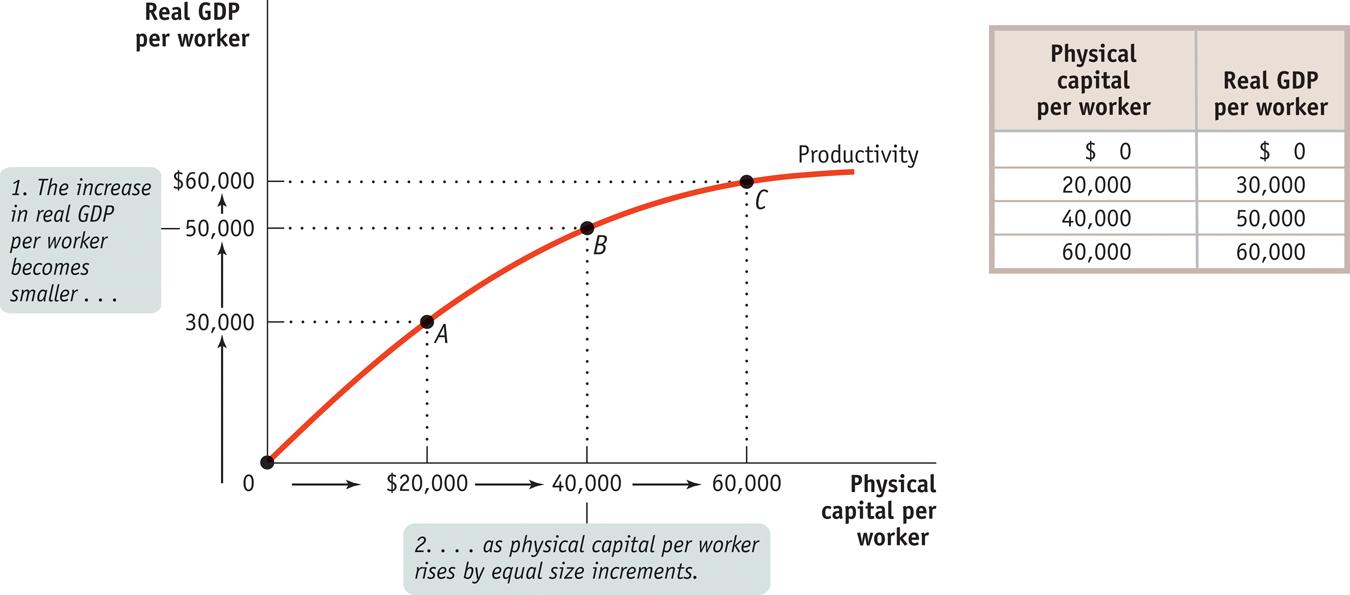
The aggregate production function shows how, in this case holding human capital per worker and technology fixed, productivity increases as physical capital per worker rises. Other things equal, a greater quantity of physical capital per worker leads to higher real GDP per worker but is subject to diminishing returns: each successive addition to physical capital per worker produces a smaller increase in productivity. Starting at the origin, 0, a $20,000 increase in physical capital per worker leads to an increase in real GDP per worker of $30,000, indicated by point A. Starting from point A, another $20,000 increase in physical capital per worker leads to an increase in real GDP per worker but only of $20,000, indicated by point B. Finally, a third $20,000 increase in physical capital per worker leads to only a $10,000 increase in real GDP per worker, indicated by point C.